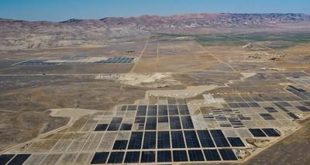These days there is a big rush on to make capturing solar energy for electricity more efficient and cheaper to produce solar panels in order to take advantage of the growth in the marketplace. Many technologies are being explored and this one being worked on at Purdue University sounds very interesting. Let us know what you think of this research in the comments below.
Need more energy at a lower cost?
In the future, that could mean installing solar power sheets on your home — made using ink and a printer.
That may sound far-fetched, but it’s a future Purdue University researchers envision as they work on increasing the efficiency of a promising new solar cell.
Combining nanotechnology, natural materials and a relatively cheap production process, Purdue chemical engineering Professor Rakesh Agrawal and a team of students hope to make solar power a major player in energy production.
“The key aspect of our work is to make this inexpensive,” Agrawal said.
What they have done is create the second-highest-efficiency solar cells made from copper zinc tin sulfide, a relatively abundant compound also known as CZTS.
Their process involves synthesizing CZTS into nanocrystals, which become something like a dark ink that can absorb light.
A layer of the ink, about one-fiftieth the width of human hair, is then applied to the surface of specially coated glass squares. After another heating process and application of nanoelectronics, the cells are ready for use.
“It is way cheaper. Most of the market right now is silicon solar cell, and it is really expensive and uses a high-energy process,” said Erik Sheets, a graduate student in Agrawal’s lab. “But for what we do, to coat it and make it, it is very cheap. We can do the entire process here.”
read more here
 Alternative Energy HQ solar power for homes, wind energy, and bio fuel issues
Alternative Energy HQ solar power for homes, wind energy, and bio fuel issues






